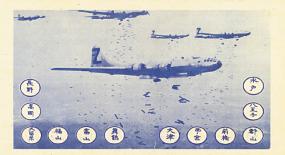Lesson #5: Proportionality should be a guideline in war
 Halfway through The Fog of War by Errol Morris (of The Thin Blue Line, or the Apple “Switch” ad campaign depending on your persuasion), Robert S. McNamara (Secretary of Defense for the Kennedy and Johnson administrations) describes proportionality in war:
Halfway through The Fog of War by Errol Morris (of The Thin Blue Line, or the Apple “Switch” ad campaign depending on your persuasion), Robert S. McNamara (Secretary of Defense for the Kennedy and Johnson administrations) describes proportionality in war:
Why was it necessary to drop the nuclear bomb if [General Curtis] LeMay was burning up Japan? And he went on from Tokyo to firebomb other cities. 58% of Yokohama. Yokohama is roughly the size of Cleveland. 58% of Cleveland destroyed. Tokyo is roughly the size of New York. 51% percent of New York destroyed. 99% of the equivalent of Chattanooga, which was Toyama. 40% of the equivalent of Los Angeles, which was Nagoya. This was all done before the dropping of the nuclear bomb, which by the way was dropped by LeMay’s command.
The gruesome description is abetted by a different kind of proportionality—that when placed in the context of size with regard to U.S. cities, these numbers become more “real.” I found this set particularly striking for how ordinary the cities were—Cleveland and Chattanooga, in addition to the usual New York and Los Angeles. The huge metropolitan areas may be too abstract for many, but Cleveland!?—those are actual people!
The entire transcript is also on Errol Morris’ site—amazing. Why don’t more studios do this? It’s great to be able to study it more closely, and was enough to convince me to purchase (rather than just rent) the movie.

